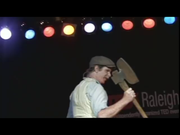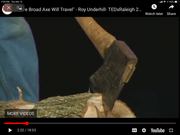- Joined
- Jul 31, 2017
- Messages
- 1,481
Riveting discussion it is. We need to test it. It looks like from now on any full size axe hang I'll do I will leave it proud: if something go wrong it is so easy to cut it flash.
What about different animal: throwing hatchets. Would you leave the haft proud on, hmm, lets say, 22 oz Vaughan half hatchet?
What about different animal: throwing hatchets. Would you leave the haft proud on, hmm, lets say, 22 oz Vaughan half hatchet?
Last edited:


